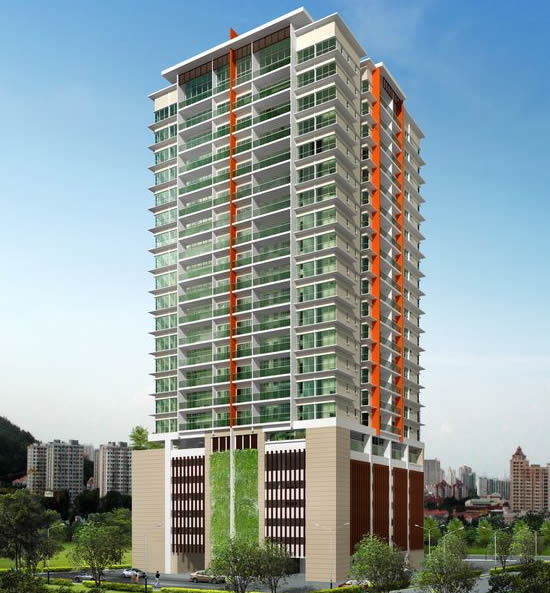Is there any equilibrium point in housing market, considering the many factors influencing demand and supply?
The main determinants of the demand for housing are demographic. Population size and population growth are the core demographic variables. However, family size, the age composition of the family, the number of children, net migration, non-family household formation, the number of double family households, death rates, divorce rates, and marriages are other demographic variables that would influence demand for housing. Other factors such as household income, price of housing, cost, availability of credit, consumer preferences, investor preferences, price of substitutes and price of complements all play a role in determining demand for housing.
Income is an important determinant of demand as shown by a study conducted by De Leeuw in 1971 that showed positive income elasticity of demand in North America ranging from 0.5 to 0.9, meaning the market demand for housing grew as real income rose. The price of housing is also an important variable influencing demand for housing, where in terms of elasticity just like any normal goods it is negative increase in price will result in decrease in demand.
As for supply, the quantity of incoming supply is typically influenced by cost, price of existing stock of houses, and the technology used in the construction, where material costs tend to contribute the largest share of the construction cost, about 30% to 40%. In the short run, supply tends to be very price inelastic increase in cost will have less effect on supply. However, over a longer period, it tends to be very price elastic increase in cost will lower supply.
A study conducted by Fallis in 1985 showed price elasticity of supply was estimated at 8.2, indicating increased in cost would lower supply significantly. The degree of elasticity depends on the elasticity of substitution and supply restrictions. For example, the use of capital intensive technology has been employed to reduce the rising labour cost, thus having less impact on the supply of housing.
As at first half of 2011, Malaysia had 4,466,062 units of housing, an increase of 1.7% from the total of supply in the first half of 2010. About 24,709 units were completed in the first half of 2011, a lower number compared to 50,611 units completed in the first half of 2010. Kuala Lumpur and Selangor accounted for 6,567 units or 27% of the total new stock. Kuala Lumpur and Selangor had 414,436 and 1,285,192 homes, reflecting an increase of 2.0% and 1.7% respectively from the total as of first half of 2010.
Other states which showed significant number of units completed are Sarawak (2,612), Penang (2,507) and Perak (2,184). The incoming supply in the country was recorded at 560,636 units, where Selangor is the largest contributor (134,143 or 24% of the total) followed by Johor (76,429 or 14%) and Negri Sembilan (65,227). Kuala Lumpur has 39,656 units coming on stream.
In terms of transactions recorded as of first half of 2011 for the country, there were 133,984 transactions in the residential category, out of which the largest transacted numbers were priced in the range of RM100,000 to RM150,000, which accounted for 22,857 units, followed by units priced between RM250,000 and RM500,000, which accounted for 21,559 units.
Selangor recorded the highest number of transactions at 38,424 units, followed by Johor (15,015 units), Penang (13,832 units), and Kuala Lumpur (11,522 units). The most popular units transacted in Selangor, Kuala Lumpur, and Penang were for units priced between RM250,000 and RM500,000, while in Johor, the highest transactions recorded were for units priced between RM100,000 and RM150,000.
This brief analysis gives an indication that the total number of units coming into the market needs to be in line not only with the level of affordability of potential buyers in the area the projects are to be launched but also the demographics of Malaysian population.
As of July 2010, total population was estimated to be 28.25 million and the population is expected to grow at a rate of 2.4% per annum, where about 65% of the population is urban population. Today, less than 4% of Malaysians live in poverty and it is estimated that about 2.0% of the total urban population in Malaysia lives below the poverty line, earning monthly household income of equal or less than RM750. Low income households (earning income equal or less than RM2,000 per month) represents 75% of the median income in Malaysia.
The national average household income is estimated at RM4,000 per month. It should also be noted that about 65% of Malaysia’s population is below the age of 35, thus there would definitely be strong demand for housing.
Due to continuous movement in the factors affecting supply and demand for housing, policy intervention is necessary to ensure that the majority of the population has equal access to own homes. Singapore’s public housing policy is often cited as the most successful example of affordable housing provision in Asian cities. A study conducted in 2000 estimated that about 85% of the total population lived in public housing with nearly 95% of them owning the flats they occupied.
By centralising its public housing effort under a single authority, Housing Development Board, Singapore has circumvented the typical problems of duplication and fragmentation of duties, and bureaucratic rivalries associated with multi-agency implementation. This centralised function also serves as a mechanism to ensure supply and demand are checked.
It is hoped that the provision of affordable homes as announced in Budget 2012 would achieve its main objective of increasing home ownership among the majority of the population.
Senator Datuk Abdul Rahim Rahman is the executive chairman of Rahim & Co group of companies.
Source: The Star



